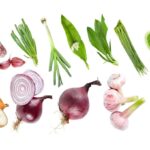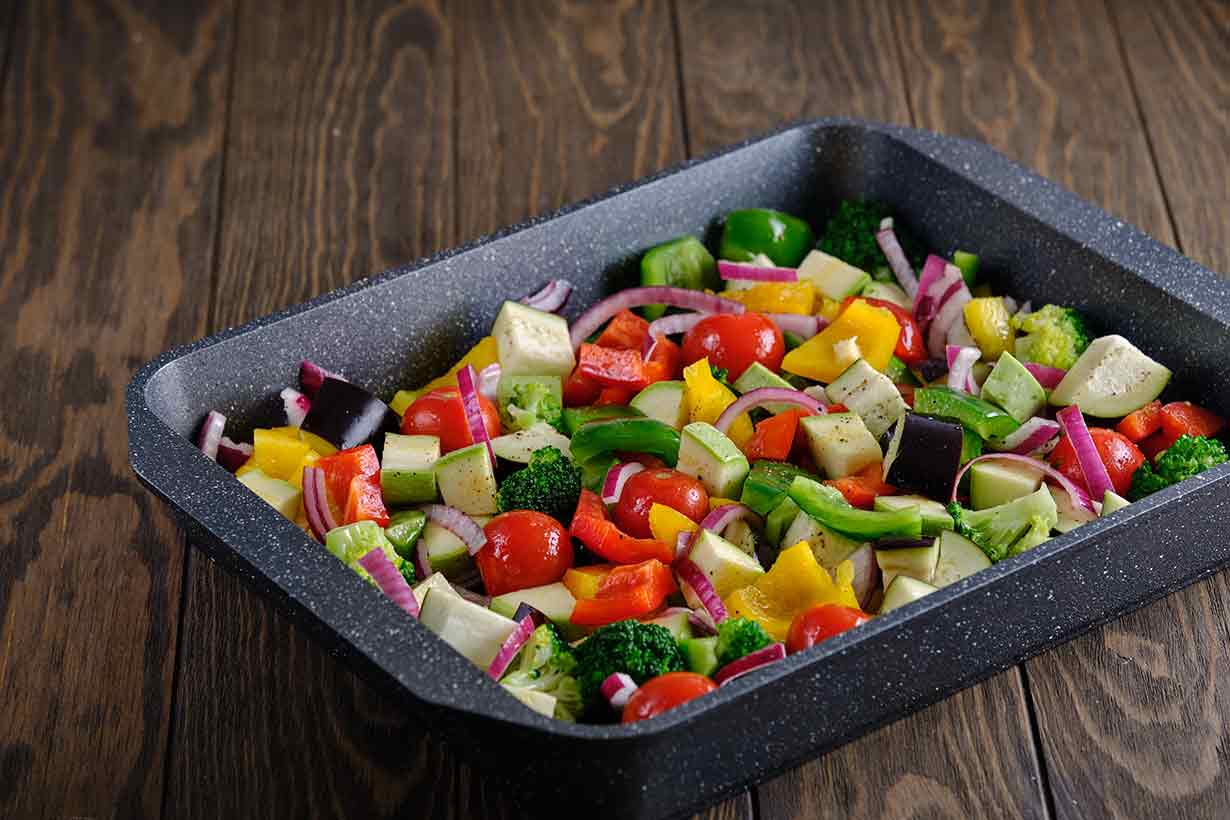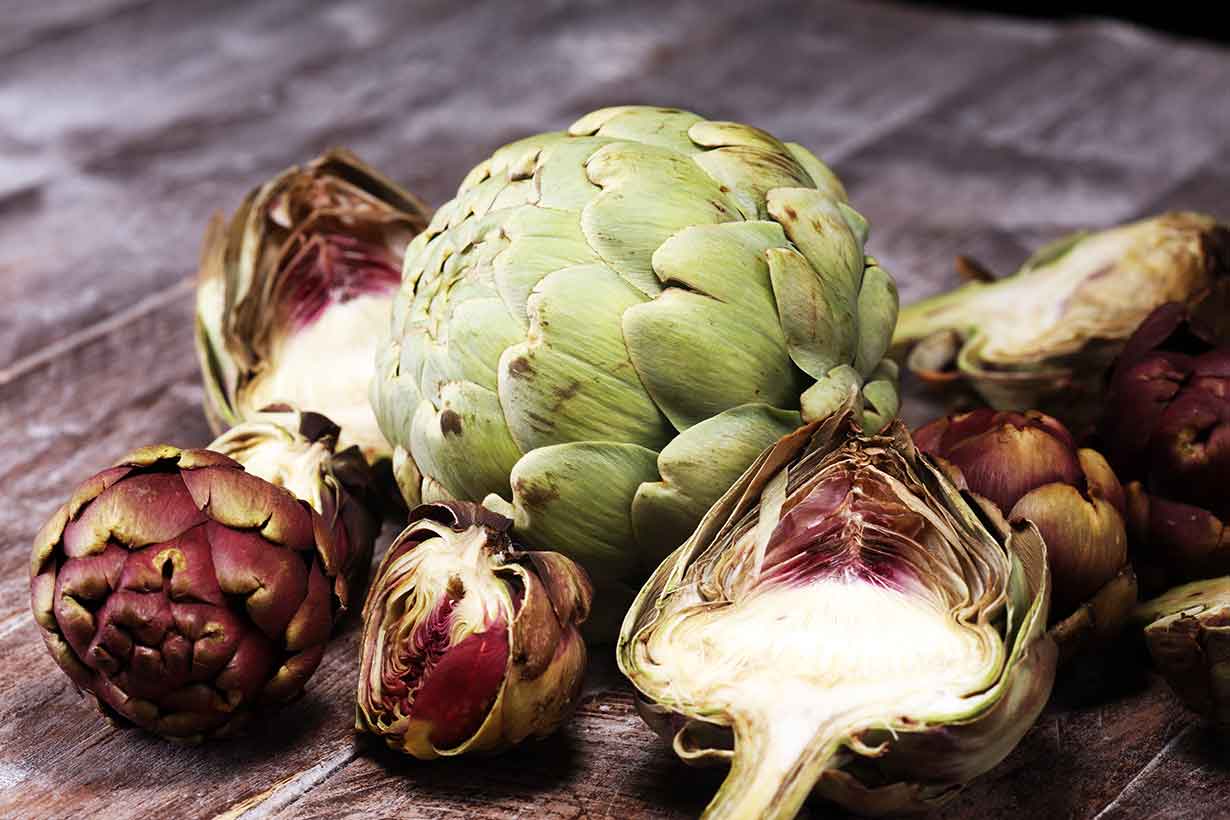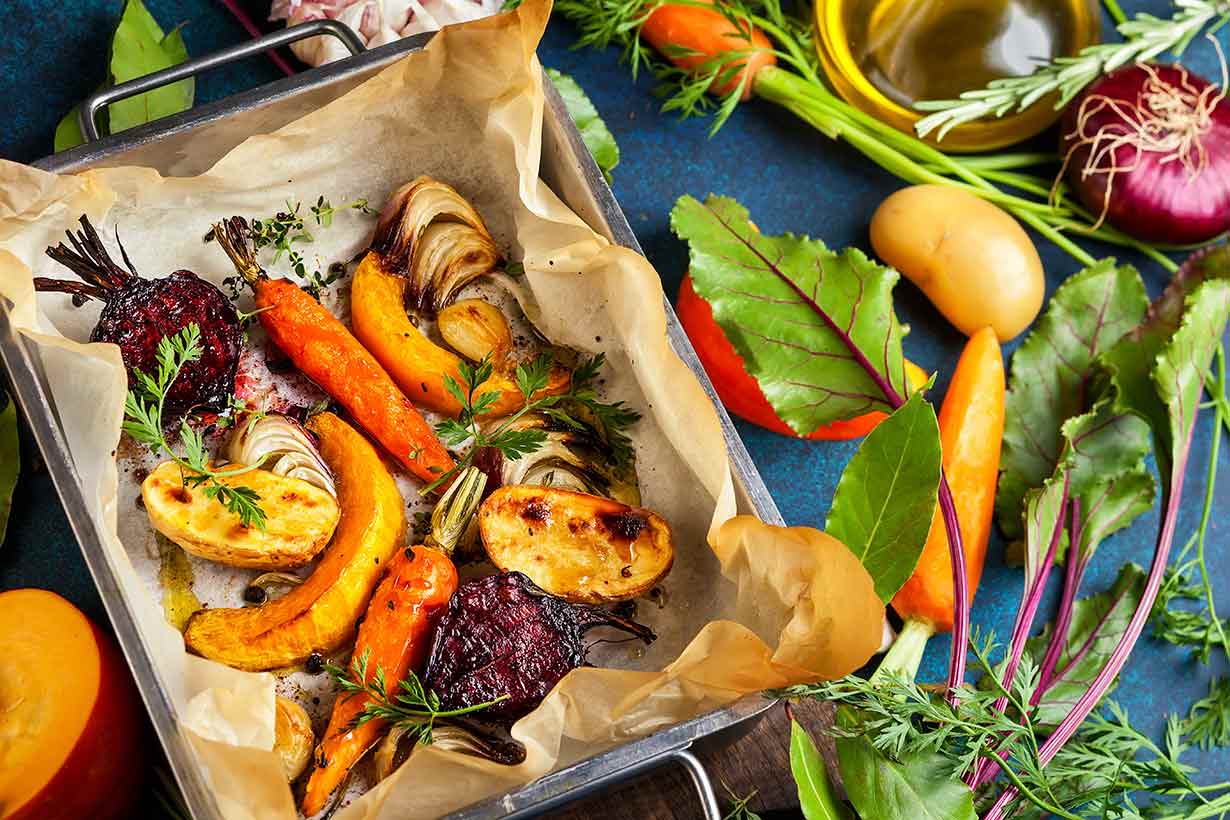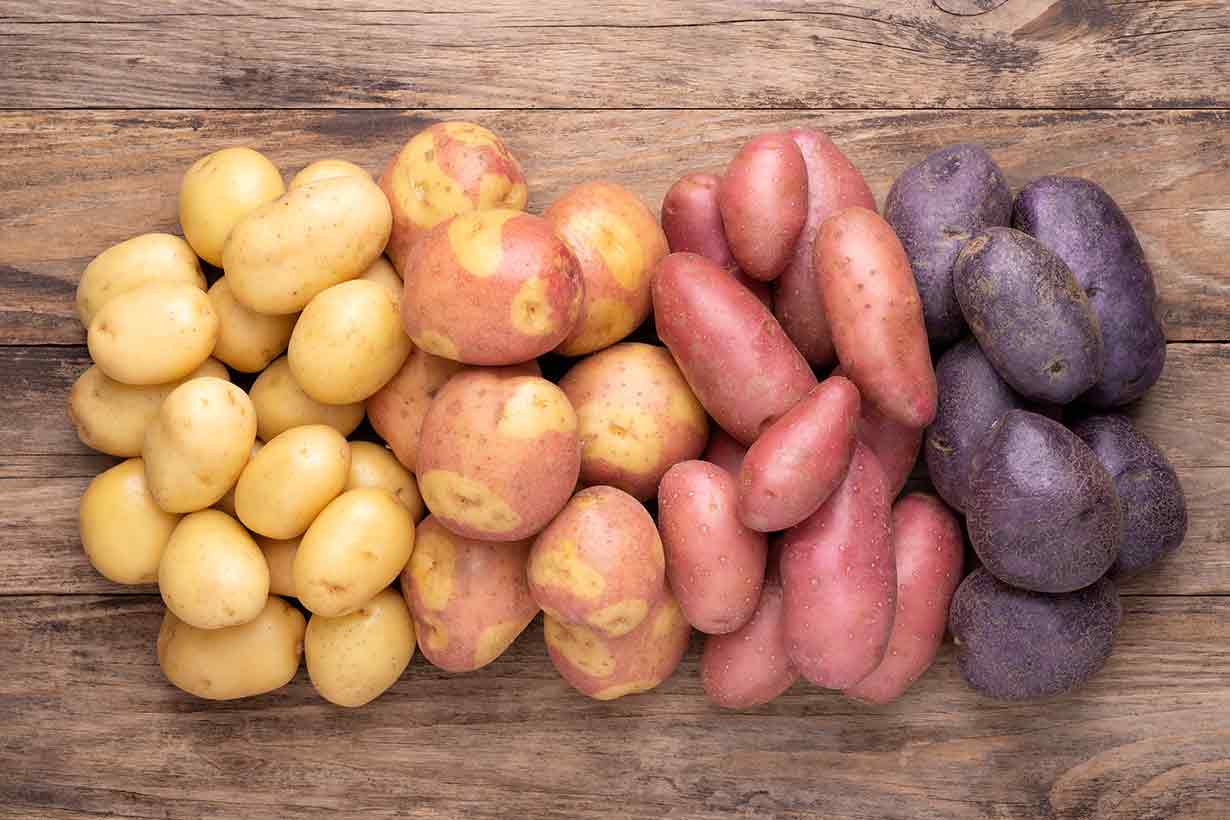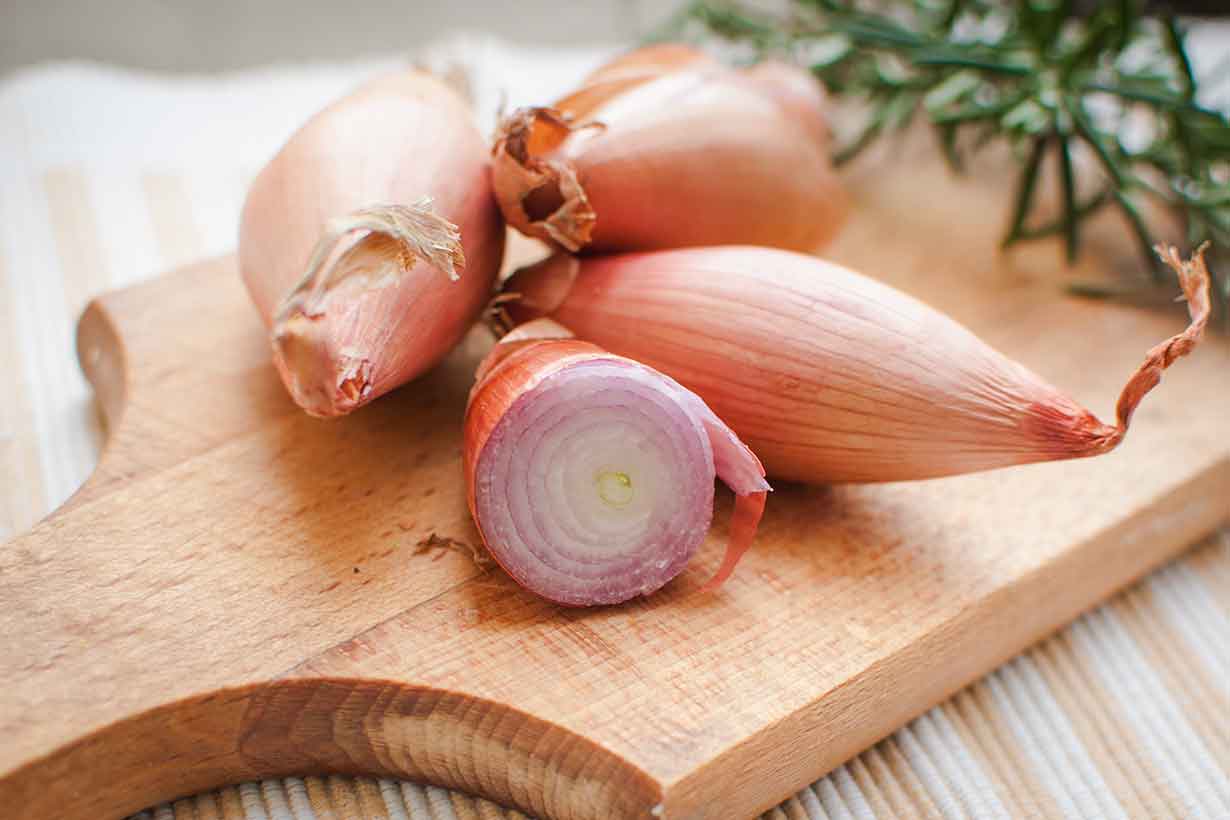Leeks belong to the Allium genus of vegetables, and they have a long white stem with green leaves surrounding the upper portion.
These vegetables are not only nutritious, but they also have a delicious flavor and help to enhance the taste of various dishes.
This article provides a guide to leeks and their nutritional values, potential health benefits, and how to use them.
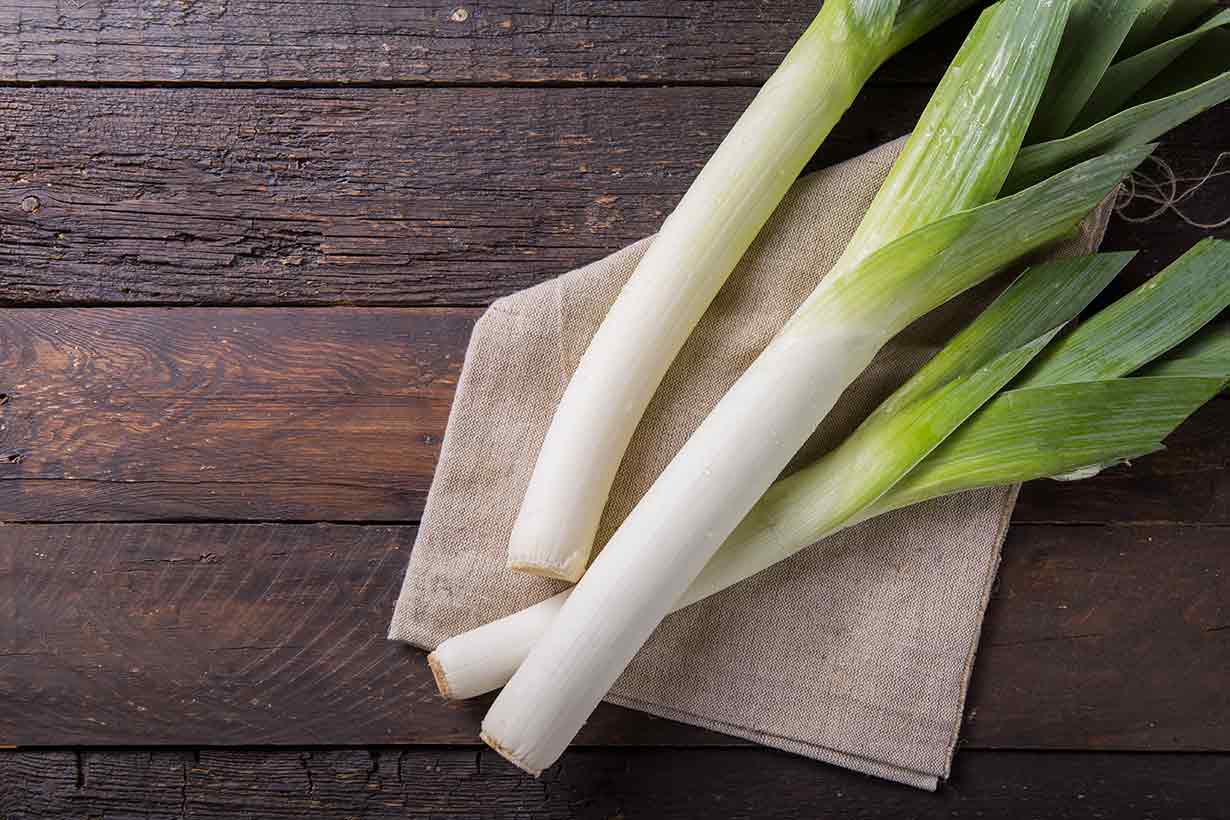
Nutrition Facts
Using data from the USDA’s FoodData Central database, the following table shows the basic nutrition profile of raw leeks (1).
| Calories/Nutrient | Amount | % Daily Value |
|---|---|---|
| Calories | 61 kcal | 3.1% |
| Carbohydrates | 14.15 g | 4.7% |
| Fiber | 1.80 g | 7.2% |
| Sugars | 3.90 | |
| Fat | 0.30 g | 0.5% |
| Saturated | 0.04 g | 0.2% |
| Monounsaturated | 0.01 g | |
| Polyunsaturated | 0.17 g | |
| Omega-3 | 0.10 g | |
| Omega-6 | 0.07 g | |
| Protein | 1.50 g | 3.0% |
Leeks Are a Good Source of Vitamins
Leeks contain a good range of vitamins. Per 3.5 oz (100-gram) serving, they provide the following vitamin content (1, 2):
- Vitamin K: 39% of the daily value (DV)
- Folate: 16% DV
- Vitamin B6: 14% DV
- Vitamin C: 13% DV
- Vitamin A: 9% DV
- Vitamin E: 6% DV
- Thiamin (B1): 5% DV
- Niacin (B3): 3% DV
- Pantothenic acid (B5): 3% DV
- Riboflavin (B2): 2% DV
- Choline: 2% DV
As shown, leeks are an excellent source of vitamin K, folate, vitamin B6, and vitamin C.
Vitamin K is necessary for the formation of prothrombin, a type of protein that plays an essential role in coagulation (clotting), which helps the body to heal from wounds. The vitamin may also play a role in maintaining bone mineral density (3, 4, 5).
Folate is particularly important during pregnancy as the vitamin helps to prevent neural tube defects and other pregnancy-related complications (6, 7).
Vitamin B6 has several roles, and it is crucial for brain development, immune health, and metabolism (8).
Lastly, vitamin C is an essential nutrient with antioxidant properties that plays a crucial role in the immune system (9).
Mineral Content
Leeks also provide a broad range of minerals in low to moderate amounts. Here is what they offer per 3.5 oz (100-gram) serving (1, 2):
- Manganese: 19% DV
- Copper: 12% DV
- Iron: 10% DV
- Magnesium: 6% DV
- Calcium: 4% DV
- Potassium: 3% DV
- Phosphorus: 2% DV
- Selenium: 2% DV
- Zinc: 1% DV
- Sodium: 1% DV
Among these minerals, leeks offer the most manganese.
Many different enzymes across different systems in the body are dependent on manganese for their activation. This mineral is also vital for the metabolism of carbohydrates and fats (10).
Leeks are also a rich source of the plant (non-heme) version of iron. While non-heme iron is not as bioavailable as heme iron (found in animal foods), it still contributes to overall iron status.
As with other vegetables like bottle gourd, leeks don’t really provide a substantial amount of any one nutrient. However, they do offer moderate levels of a broad range of vitamins and minerals.
Leeks Are Associated With Reduced Risk of Several Cancers
Leeks are a member of the Allium family of vegetables which also includes garlic, onions, and shallots.
Similar to other vegetables in this group, leeks contain organosulfur compounds (11).
Organosulfur compounds are simply organic compounds that contain sulfur. Sulfur is currently classed as a non-essential mineral, but like other non-essential compounds, it may offer health benefits (12).
It is thought that organosulfur compounds may potentially have cancer-protective effects. On this note, a variety of studies have demonstrated that organosulfur compounds play a regulatory role in enzymes that both detoxify and activate carcinogens (11, 13, 14).
In research relating specifically to leeks, a case-control study featuring 285 women found that a higher intake of leeks was significantly associated with a lower risk of breast cancer (15).
Furthermore, numerous observational studies find an association between Allium vegetable intake and reduced risk of several different cancers (11, 16, 17, 18, 19).
However, the evidence-base for Allium vegetables reducing cancer risk is mixed, and some studies find no association between Allium vegetable intake and lower cancer rates (20, 21).
Further human research is necessary to examine the relationship between Allium vegetables and cancer risk more clearly.
Leeks Contain a Variety of Polyphenols
Leeks contain a range of different polyphenols. The compounds present in the most significant concentrations are gallic acid, kaempferol, and quercetin (22, 23, 24).
Quercetin supplementation has been shown to lower blood pressure. However, a systematic review and meta-analysis of randomized controlled trials demonstrated a lack of significant effects at doses under 500 mg (25).
Per 100 gram, cultivated leeks only provide 1 mg of quercetin, and wild leeks offer 8 mg (24).
It is worth noting that the form of quercetin (quercetin glucosides) found in plant foods has a higher bioavailability than the common supplementary form (quercetin aglycone).
However, there is currently no relevant human research on a high dietary intake of quercetin and kaempferol from plants, so more research is necessary to determine whether there is any benefit (24).
Research has also shown that quercetin and kaempferol have anti-cancer effects in studies using human cells (26, 27).
Due to this, it is sometimes possible to hear somewhat exaggerated claims regarding these compounds, but what happens in cells is very different from what takes place within the human body.
Although dietary kaempferol and quercetin may have benefits, there is no human clinical research to suggest either can prevent or treat cancer (26).
Carotenoids
Leeks contain a relatively high amount of carotenoids.
Carotenoids are a class of phytonutrients that are precursors to vitamin A, which is why they are sometimes referred to as ‘provitamin A.’
Leeks are a particularly rich source of a carotenoid called lutein, and data shows that they provide 36.8 mcg of this carotenoid per gram (22).
Lutein is thought to play a protective role in eye health. In this regard, a recent meta-analysis of randomized controlled trials on lutein supplementation demonstrated that dietary lutein had beneficial effects on age-related macular degeneration (23).
How To Use Leeks
Leeks have a slightly crunchy texture and a taste that isn’t entirely unlike an onion, but they are milder and sweeter in flavor.
However, they can work in the same way as garlic and onions, and they are certainly taste-enhancers when used in a dish.
It is possible to use the whole of the leek: the white stem, the light green parts, and even the darker green leaves.
After washing the leeks, it is best to slice them into small, thin pieces, as shown in the image below:
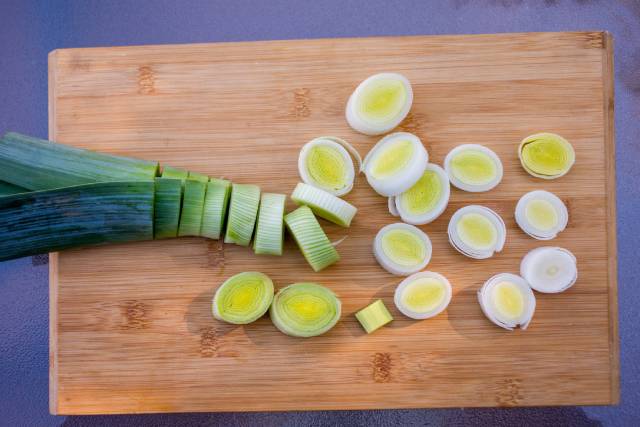
The leeks are then ready to be cooked.
How To Cook Leeks
There are many different ways to cook leeks, but here are some of the most common ways to use them.
Sauteed
Sauteed leeks have a delicious flavor, and they make an excellent side to any meat, fish, or protein-based food.
To saute them, follow the instructions below:
- First, heat some butter or cooking oil of choice at medium to high heat in a pan.
- Next, when the pan gets hot, add the leeks and stir continuously.
- Add a sprinkling of salt when the leeks start to soften.
- After this, keep stirring for approximately 8-10 minutes or until the leeks start browning.
Boiled
Although they don’t taste as good, boiling leeks in salted water is another cooking method.
Some people may prefer this way of cooking as it cuts out the extra added fats necessary for sauteing.
Roasted
Put some leeks on a baking tray with some other vegetables (and meat or fish if desired), and then cover them with a little oil and salt.
Roasted in this way, the leeks taste similar to how they do when sauteed.
Soups and Stews
Leeks taste great when added to soups and stews, and they also help to enhance the taste of the finished dish.
For anyone wishing to try a similar way of cooking, there is a good recipe idea here for braised chicken and leeks.
Other Ideas
There are also many other ways to use leeks, so here are some other ideas:
- Put them in an omelet or quiche
- Add them to gratin
- Make a frittata using leeks
- Use them in a pie
- Use raw leeks in a salad (they have a stronger, spicier taste when raw)
- Marinate whole leeks in balsamic vinegar and soy sauce and then grill them
Final Thoughts
Leeks contain a beneficial range of vitamins and minerals.
Furthermore, their content of organosulfur compounds, polyphenols, and carotenoids may potentially offer further benefits.
Since leeks also taste delicious and contribute large amounts of flavor to food, they’re an excellent addition to any diet.

